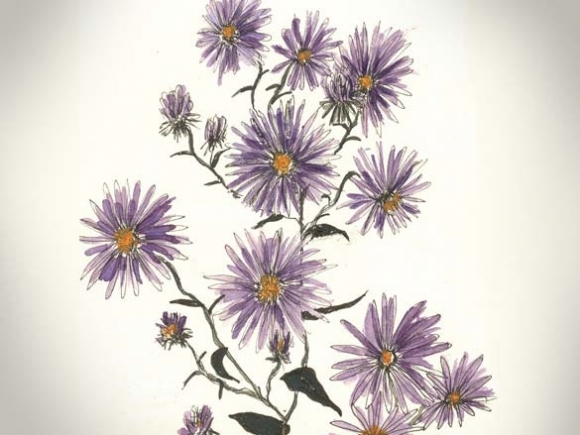When they bloom, ‘fall’s a-coming’

Late summer has slid into early autumn. The end of summer officially arrived with the autumnal equinox of Sept. 23, when the sun crosses the celestial equator.
One senses this transition in the cool mist-shrouded mornings we’ve been experiencing of late … as well as by the brown-splotched and red-tinged leaves of the buckeye trees. Communal groups of swallows will gather on wires and branches prior to their annual southerly migration. Monarch and cloudless sulphur butterflies will pass with ease over high ridges and through low gaps headed for ancestral wintering grounds.
Many think that spring is the prime season for wildflowers, but the fall season is equally spectacular — and perhaps even more varied and interesting. Joe Pye weed, iron weed, cardinal flower, the golde goldenrods, various woodland orchids, gentians, and others are just some of the showy species associated with the upcoming season. And the quintessential fall wildflowers are the asters.
Here in the Smokies region there are 30 or so asters. These can often be difficult to identify down to the species level. The best non-technical field guides for this purpose, in my opinion, are Lawrence Newcomb’s Newcomb’s Wildflower Guide (Boston: Little, Brown and Co., 1977), supplemented by Richard M. Smith’s Wildflowers of the Southern Mountains (Knoxville: University of Tennessee Press, 1998) and Jack B. Carman’s Wildflowers of Tennessee. (Tullahoma TN: Highland Rim Press, 2001).
Don’t become overly frustrated if — even after consulting those sources — you can’t make a final decision as to the precise species you’re attempting to identify.
In that regard, former WCU biologist Jim Horton, observed in The Summer Times (Tampa: Cider Press, 1979) that, “The asters form a nearly continuous series of variant forms. This means that while any two aster plants may be quite different from each other and may obviously belong to different species, it is possible to find ... plants that are transitional between one variant and the next.” In other words, even the experts can’t always determine which species of aster they’re trying to identify. It’s my experience that the same observation can be made in regard to goldenrods.
Related Items
When one hears the name “aster,” he or she usually conjures up an image of a purplish-blue flower with a disc shape. But more than a few aster species bear small white flowers. Several of the white-flowered aster species blossom by early September.
Acordingly, Donald and Lillian Stokes, in their informative book A Guide to Enjoying Wildflowers (Boston: Little, Brown and Co., 1985), noted that, “The name ‘aster’ comes from the Greek word for ‘star,’ but the small-white-flowered species, called frost asters, should have been named after the Milky Way. They bear such an abundance of tiny blossoms among roadside grasses that they look like the mass of stars you see strewn across the sky on a clear night. One legend maintains that asters are a result of a god scattering stardust across the land.”
Long ago, I was discussing fall wildflowers with an elderly woman on her farm near Sylva. She kept referring to a group of flowers she was particularly fond of that she knew as “Farewell to Summer.” Curious as to exactly what she was talking about, I asked her to show me some.
“Sure enough,” she said. I followed her into the garden behind her home, where she pointed to a beautiful stand of large-leaved asters (Aster macrophyllus) in full bloom that, she advised me, her husband had transferred from the wild into their garden when they were married.
“When they bloom, you know fall’s a-coming,” she said.
(George Ellison is a naturalist and writer. He can be reached at This email address is being protected from spambots. You need JavaScript enabled to view it..)









